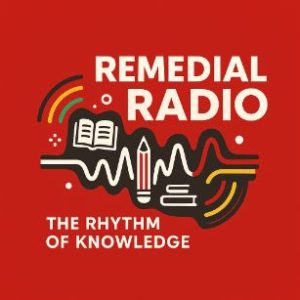Introduction
The government of Uganda operates under a decentralized system of governance, which empowers both the central government and local governments to deliver public services and make key decisions. Understanding how these systems work helps citizens appreciate the structure of leadership, administration, and accountability in the country.
In this blog, we will explore:
- The structure of government administration in Uganda
- The central government and its organs
- Local government systems
- Roles and responsibilities
- Importance of decentralization
- Challenges and solutions
Let’s dive deep into how Uganda is governed from the national level to the grassroots.
1. Structure of Government in Uganda
Uganda’s government system is based on the 1995 Constitution of Uganda. The country uses a presidential system and practices democratic governance. The government is structured into three key arms:
| Arm of Government | Role |
| Executive | Implements laws and runs the country |
| Legislature (Parliament) | Makes and passes laws |
| Judiciary | Interprets laws and administers justice |
These three arms work together to promote good governance and uphold the rule of law.
2. The Executive Arm of Government
President of Uganda
The President is both the Head of State and Head of Government. As the top executive authority, the president:
- Appoints ministers and other key officials
- Commands the armed forces
- Oversees the implementation of national policies
- Represents the country both locally and internationally
🟢 Example: The President appoints the Prime Minister and Cabinet Ministers to oversee government ministries.
Vice President and Prime Minister
- The Vice President assists the President in executing duties and may represent the President in various functions.
- The Prime Minister coordinates the operations of government ministries and is the leader of government business in Parliament.
Ministries and Government Departments
Ministries are responsible for specific sectors such as Health, Education, Agriculture, and Internal Affairs. Each ministry is led by:
- A Cabinet Minister
- A Permanent Secretary
- Technical staff and administrators
These ministries formulate policies, plan budgets, and implement government programs.
3. The Legislature (Parliament)
Uganda’s Parliament is a unicameral legislature, meaning it has only one house. It is composed of:
- Members of Parliament (MPs) elected from constituencies
- District Women Representatives
- Special interest groups (Youth, Elderly, PWDs, Workers, Army)
Functions of Parliament
- Making and enacting laws
- Approving national budgets
- Scrutinizing government policies
- Representing citizens’ views
- Checking excesses of the executive
🟢 Example: Parliament debates and passes the national budget every financial year.
4. The Judiciary
The Judiciary is an independent arm of government. Its role is to administer justice and interpret the laws of Uganda.
Hierarchy of Courts
| Court | Function |
| Supreme Court | Highest court of appeal |
| Court of Appeal | Hears appeals from High Court |
| High Court | Handles civil and criminal cases |
| Magistrate’s Courts | Operate at district and local levels |
| Local Council Courts | Resolve minor disputes at community level |
The Chief Justice is the head of the Judiciary.
5. Local Government Systems in Uganda
Uganda operates a decentralized local government system, which brings governance closer to the people.
Levels of Local Government
| Level | Structure |
| District | Headed by a District Chairperson and District Council |
| County | Administrative level between sub-county and district |
| Sub-county | Led by a Sub-county Chief and Local Council III |
| Parish | Administered by Parish Chiefs |
| Village (LC I) | Led by the LC I Chairperson and Executive Committee |
🟢 Example: The LC I Chairperson helps solve land disputes and community conflicts.
Functions of Local Governments
- Delivering public services (health, education, water)
- Planning and budgeting for development
- Mobilizing local revenue
- Promoting accountability and community participation
Local governments have autonomy but are supported by the central government through funding and technical supervision.
6. Importance of Decentralization
Uganda’s decentralization aims to:
- Promote citizen participation in decision-making
- Improve service delivery by reducing bureaucracy
- Ensure transparency and accountability at grassroots
- Allow local communities to plan their own development
This system has made governance more accessible and inclusive, especially in rural areas.
7. Roles of Key Local Government Leaders
| Position | Main Responsibility |
| District Chairperson | Political head of the district |
| Chief Administrative Officer (CAO) | Oversees district administration |
| LC III Chairperson | Supervises development at sub-county level |
| LC I Chairperson | First point of contact for citizens |
| Parish Development Committees | Coordinate grassroots development (e.g., PDM programs) |
8. Challenges in Government Administration in Uganda
Despite the well-structured administration, Uganda faces challenges such as:
- Limited funding – Especially at local levels
- Corruption – Misuse of public resources
- Inadequate staffing – Especially in remote districts
- Political interference – Undermines professionalism
- Low civic awareness – Citizens not fully involved
9. Way Forward and Recommendations
To strengthen Uganda’s government administration systems:
- Invest in capacity building and staff training
- Promote anti-corruption mechanisms at all levels
- Increase funding for local governments
- Strengthen monitoring and evaluation of service delivery
- Encourage civic education to promote public participation
Conclusion
The government administration system in Uganda is a dynamic structure that enables the country to manage public affairs effectively. The interplay between the central government and local government systems ensures that leadership, accountability, and service delivery reach every citizen.
For Uganda to thrive socially and economically, both leaders and citizens must understand how these systems function and how they can contribute to nation-building.
💡 Engage with your local leaders, attend council meetings, and be part of community development!
✅ Quick Summary Table
| Level | Example of Leaders | Main Role |
| Central Government | President, Ministers | Policy making and national leadership |
| District | Chairperson, CAO | Development and coordination |
| Sub-county | LC III Chairperson | Local governance and supervision |
| Village | LC I Chairperson | Grassroots mobilization and community peace |
If you found this blog useful, share it with students, teachers, and community members interested in understanding Uganda’s administration.
🔗 Follow us for more educational content on governance, development, and civic responsibility.


Leave a Reply